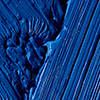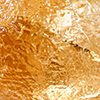Lamp Black pigment

LAMP BLACK HAS BEEN AROUND SINCE PREHISTORIC TIMES.
This lightfast, permanent, opaque blue-black pigment was used by the Ancient Egyptians more than 4000 years ago for painting tombs and murals. They preferred its fineness and deep black colour to the grey-black of charcoal.
As you’d expect from its name, lamp black is made by collecting soot from beeswax candles or lamps that burn tallow, resin or oil. The basic process is simple: carbon is deposited on a cold surface that is suspended over an oily flame.
The manufacturing methods have been refined over thousands of years and many raw materials have been experimented with. The legendary Ancient Greek artist Apelles is credited with inventing a lamp black called atramentum elephantinum by collecting the soot of burnt ivory tusks. The Romans made lamp black by burning the dregs of wine – apparently the best wines produced a blue-black colour that was equal to indigo.
Throughout history, lamp black has been employed to make writing and drawing inks. It has an extremely fine grain and does not need further grinding. At the same time as the first Egyptian pharaohs, the Chinese combined lamp black and animal glue to create Chinese ink. Later, the raw materials were traded from India and the English renamed it Indian ink.
In recent years, the production of true lamp black has been generally replaced by the burning of acetylene gas rather than oils to create a purer carbon black.




